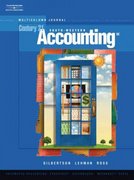Question
Classic Cabinets has a factory that produces custom kitchen cabinets. It has multiple product lines. Materials and labor for the cabinets are determined by each
Classic Cabinets has a factory that produces custom kitchen cabinets.
It has multiple product lines. Materials and labor for the cabinets are determined by each job.
To simplify the assignment, we will assume the following average costs.
The materials include $1,000 for the wood and other materials of $200. Both items listed are on a per job
basis. It requires 20 hours of labor on average for a custom kitchen. The hourly rate is $10. The sales
price will be set at a markup of 65%. The company estimates that it will have 16,000 direct labor hours in total for the kitchen cabinets.
It assumes 800 units are sold on average per year. A breakdown of estimated yearly costs related to the kitchen cabinets follows:
Salaries- office & administrative
$ 520,000
Salaries for factory personal
$
220,000
Office Rent
$ 125,000
Factory Rent
$
20,000
Utilities and Misc office expenses(based on units sold)
$
20,000
Travel(based on units sold)
$
24,000
Insurance - office
$
12,000
Depreciation - office equipment
$
40,000
Depreciation for factory equipment
$
70,000
Advertising
$
20,000
Sales commissions(based on units sold)
$
45,000
Factory Property taxes
$
10,000
Maintenance for factory equipment
$
80,000
QUESTIONS:
1.
Determine the cost of manufacturing one custom kitchen assuming the units given.
Assume the MOH costs are allocated based on the direct labor hours per unit.
Please show all calculations and round to the
nearest dollar. I would recommend that you calculate the MOH per kitchen first.
You should calculate an Overhead rate. Discuss other options for the activity base and the importance of the MOH allocation
.
Do multiple product lines impact the MOH allocation?
2.
What are the variable costs for this product line?
What are the fixed costs?
I would recommend that you show a schedule for each area on a yearly basis.
For the variable costs, also, show them on a per unit (800
units)
How does a company identify each type of cost?
Can a cost classification be changed over time? If yes, explain how.
If no, explain why?
3.
What is the Contribution Margin (CM) in total
and
per unit dollars, and CM% for the sale of 800 kitchen
cabinets?
Explain the importance of CM and how it can be used by companies to predict future income.
Create some examples with numbers to show how it can be used.
4.
Create a traditional Income Statement assuming a volume of 800 units.
For the cost of goods sold, please
use the per unit cost you calculated in #1.
You do not have to create any additional schedules.
I would
use a similar format to exhibit 16-8 on page 737 or from your lecture notes.
I recommend that you list out
all operating expenses given above.
Do not use just Selling and General/Administrative Expenses for your
categories.
Points will be lost by not listing out all period costs.
You can ignore interest and income tax
expense.
5.
Prepare three CVP Income Statements using the following yearly volumes:
400, 800 and 1,200.
Keep in
mind how variable and fixed costs behave.
The traditional income statement from #4 should be about the
same net income as the 800 units for the CVP format.
please note that it is missing a title and your numbers are for a year.)
a)
Calculate Break-even in units and sales $ for the company
b)
Calculate units and sales $ if the company wants a profit of $1,000,000.
c)
Margin of safety for 800 units.
Discuss the importance of these calculations to a company.
Fully discuss the differences between the
traditional vs CVP format.
Give examples supported by numbers of how you would use these calculations
as the CFO of the company.
6.
If the following changes were to be made, calculate a new CVP Income Statement:
Direct Material costs
decrease by 10%; fixed costs increase by 15% and sales price would increase by 5%.
Assume you are
selling the 800 units.
Should the company consider these changes? Why or why not?
Give some real
examples of cost increases for fixed costs and decreases for direct materials that could be implemented for
the business.
7.
Additional information for another product line
Assume another product line is also being considered - bathroom cabinets.Only use this information for the questions listed directly below.
Higher skilled workers would be required which will result in paying them $18 per hour.
Additional MOH costs for the year will be $170,000.These costs will be in addition to the costs already being incurred.These costs are due to the additional product line and also related to the current product lines for additional production abilities.The two lines will share all MOH costs.
- Should the company consider using ABC?Advantages and disadvantages? Discuss why or why not?Areas to include in the discussion but not limited to the following:impact on product cost, implications of not using the right allocation and its impact on price if any, what type of companies use ABC etc....
How specifically would ABC help allocate MOH costs?
Step by Step Solution
There are 3 Steps involved in it
Step: 1

Get Instant Access to Expert-Tailored Solutions
See step-by-step solutions with expert insights and AI powered tools for academic success
Step: 2

Step: 3

Ace Your Homework with AI
Get the answers you need in no time with our AI-driven, step-by-step assistance
Get Started


